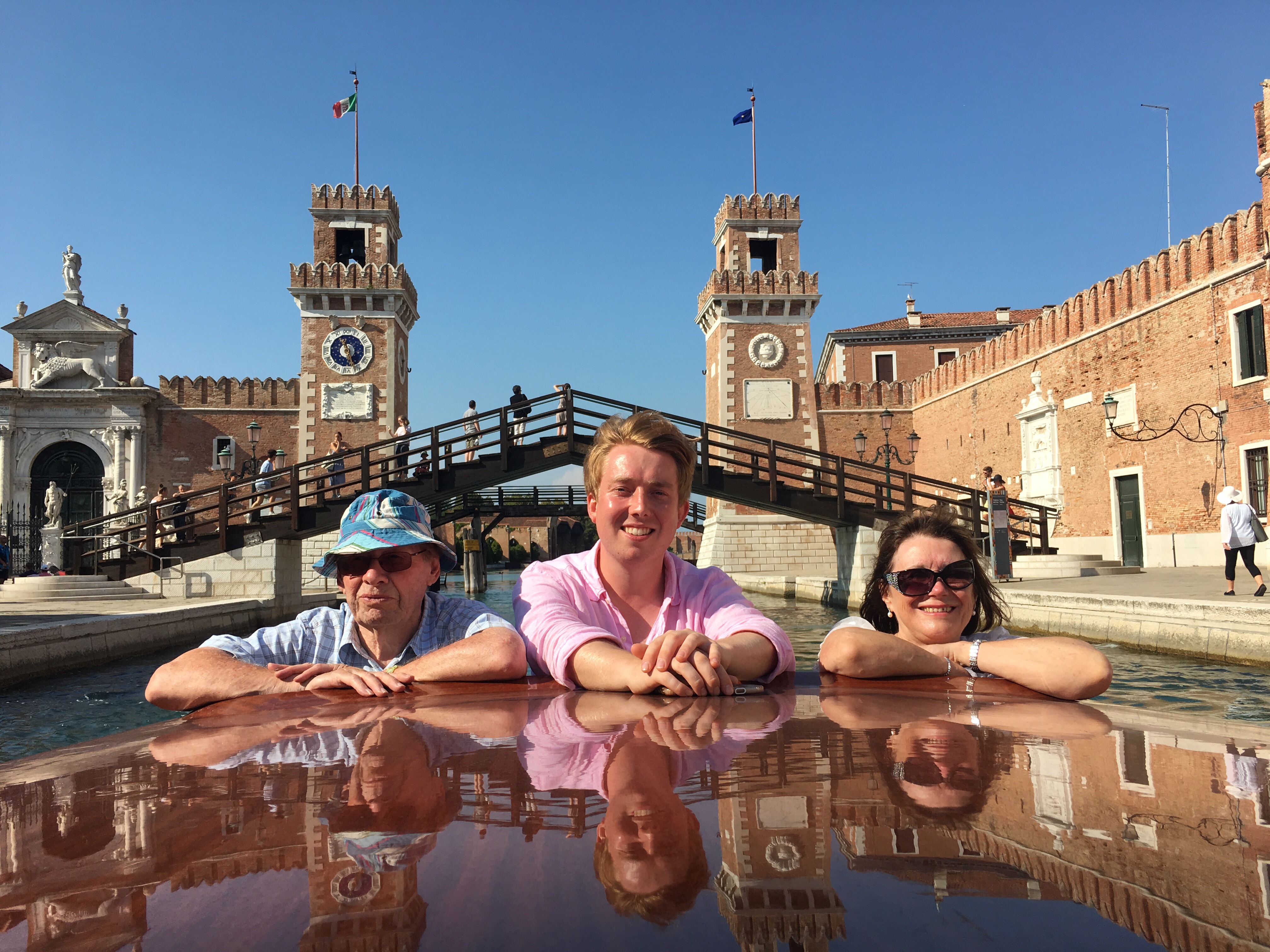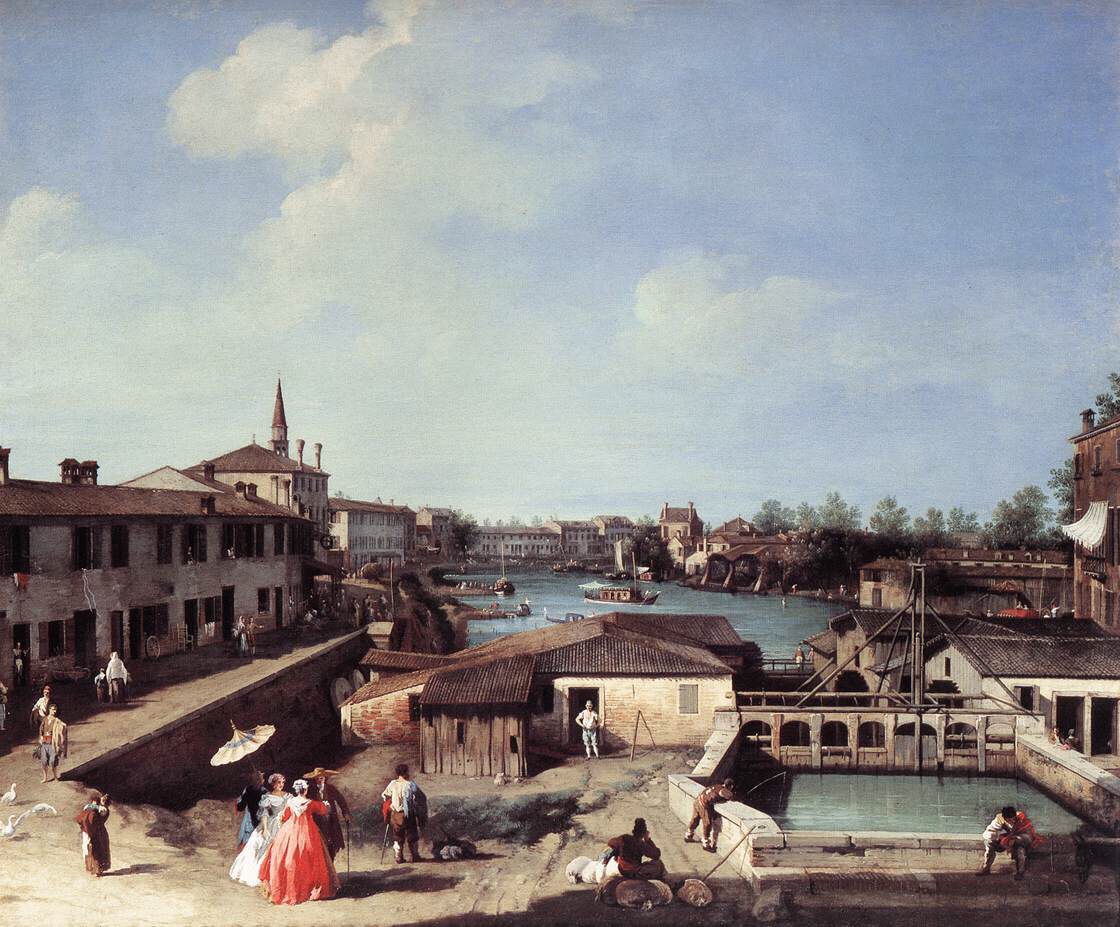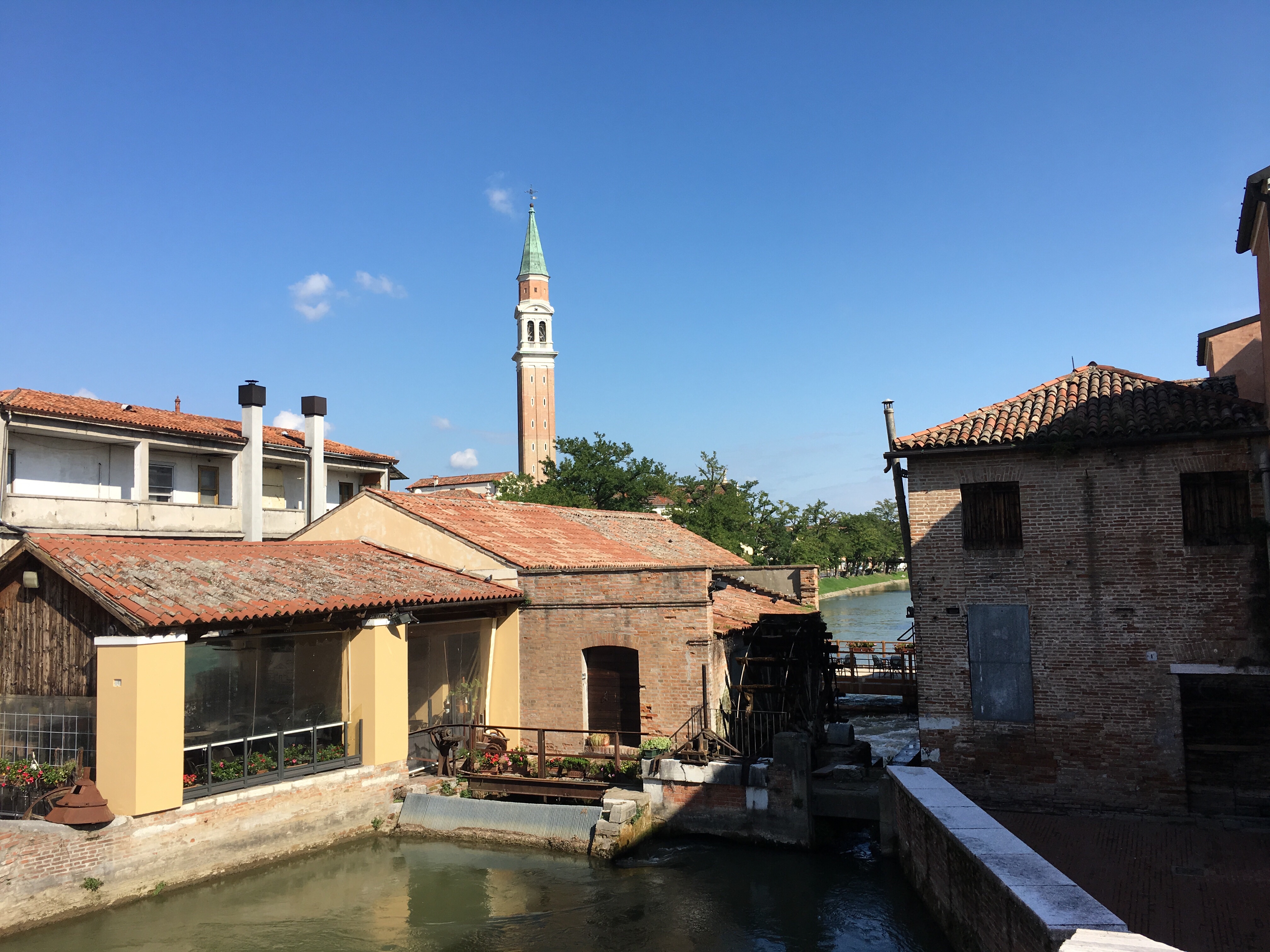Souvenir shopping really started with the ‘Grand Tourists’. These were wealthy, young British travellers, exploring Europe, especially Italy, determined to enrich themselves with the history, art and culture of the Continent. The minute these enthusiastic visitors arrived in a city they would be mobbed by street vendors, desperate to sell them all manner of trinkets, fans, maps, perfumes and parasols.
VENICE – Lines of boatmen, waited patiently to ferry the visitors to their lodgings on or near the Grand Canal. A ride in a gondola marked the start of a stay in a unique city with no roads, no carriages, no pot holes. Instead a city of watery alleys, canals and the blue-green lagoon extending on all sides as far as the eye could see. The combination of light, water and sky was inspiring and captivating. The palaces of the Grand Canal jostled for position, each grander than its neighbour. White marble, decorated with columns and obelisks, elaborate balconies and regal landing stages, lined with flags. A visual feast for the weary traveller. This was a city of impossible beauty.
MEMORIES – However in the days before cameras, there was no possibility of returning home with a set of holiday photos. So how could a visitor remember these magical and beautiful scenes when back at home? There were a variety of choices. An etching or print of one of the famous sights; St Mark’s Basilica, The Doge’s Palace or Rialto Bridge could be purchased. Typically these prints would be monochrome, black and white. They were mass produced and the quality, to be polite, was variable. If funds permitted a much more elegant and beautiful solution was to commission a painting to take home as a permanent souvenir of one’s travels.
THE BRITISH CONSUL IN VENICE – This is where Joseph Smith enters our story. Smith was the British Consul to Venice, a successful businessman and a great art lover. Within hours of arriving in Venice visitors would receive an invitation to Smith’s palazzo for drinks, lunch or dinner. Hanging on the walls, in his elegant home, was a selection of paintings by the young Venetian artist Antonio Canale. Canale was born and bred in Venice, and quickly became known as Canaletto, literally ‘little canal’. His spectacular, detailed and highly accurate ‘veduta’ paintings of the city, rapidly became the ‘must have’ souvenir of Venice for the ‘Grand Tourists’. After all what better way to demonstrate cultural refinement, education and overall sophistication than the acquisition of a Canaletto, directly from the artist, whilst in Venice. The ultimate ‘conversation piece’ back in England, when the painting was hung on the wall of the drawing room in one’s country house. Even today, almost every country house in England has at least one, if not a couple of Canaletto paintings in their art collection.
JOSEPH SMITH – supported and promoted Canaletto’s work for decades. He acted as the artist’s agent, financial supporter and friend. He commissioned a whole suite of paintings of the Grand Canal for his own enjoyment. He eventually sold his large personal collection of Canaletto paintings to King George III in 1762. This became the basis for a royal art collection – which can now be seen in the National Gallery, Trafalgar Square and the Queen’s Gallery at Buckingham Palace. What is particularly interesting about Canaletto and his paintings of Venice is their popularity. Most of his work was painted in the 1740s and 1750s – almost 300 years ago. Yet they retain a vibrancy and charm that is as fresh now as it was when they were just painted.
THE WALLACE COLLECTION – A perfect example of this freshness and joy are the two Canaletto’s in The Wallace Collection, Manchester Square (just behind Selfridges), London. These paintings have recently been restored and cleaned. They are beautifully hung in a long, rectangular gallery, the lighting is excellent. The paintings are truly magnificent. If you look carefully at the paintings below, the detail is quite exceptional. The Doge’s Palace and Piazzetta of San Marco can be clearly seen. The lagoon is full of boats, of every type and style. Look at the beggar in the foreground, wrapped in a heavy blanket. The dog stood on the water’s edge, mesmerised by its reflection perhaps. The delivery man in the red hat, leaning against a large barrel. What does the barrel contain, maybe fine wine for an important dinner. Look at Canaletto’s use of ripples and wake on the water to convey movement.


CANALETTO – This painting shows us a wonderful facade of the Church of San Giorgio Maggiore. This church designed by Andrea Palladio in the 16th century is beautifully represented in white and pink hues. Look at the reflection of the church in the water. The ripples on the surface of the lagoon suggest a light breeze. There is an arch to the right of the church that is an entry into a covered dock for boats. This dock is still in use today – exactly as depicted in this painting. In fact I used this dock to help guests disembark, on a windy and stormy day, just last year.

PUNTA DOGANA – Here Canaletto paints the ‘Customs Point’ or ‘Punta Dogana’ this was the entrance to the Grand Canal. All visiting vessels had to pay dues and taxes to enter the Port of Venice and to have the right to load or unload their cargo. The ‘Punta Dogana’ was the financial collection point for the city. On a busy day in the 1740s hundreds of boats and ships would queue to pay their dues. It is inspiring to think that these views and panoramas are just as beautiful today as they were in the 1740s.

CANALETTO’S ENDURING APPEAL – Proof of Canaletto’s continued popularity can be found in the regular ‘Venice and Canaletto’ exhibitions that take place in London every couple of years. A Canaletto exhibition at The Queen’s Gallery finished just last year. There’ll be others coming up soon. One of the reasons for Canaletto’s enormous popularity, even today, is that you can take a Canaletto painting, from 1740 and compare it with a view today, often these views have changed very little, even though the painting is almost 300 years.
So next time you are passing through Trafalgar Square, pop into the National Gallery for twenty minutes, head up the stairs and turn right into Room 38. It’s full to bursting with magnificent Canaletto paintings, mostly of Venice. It’s well worth a visit. Then next time you see a Canaletto painting, in real life or reproduced as a greeting card or a calendar photo remember Antonio Canale the artist, his exceptional talent and his attention to detail, creating images of Venice that have endured to this day. What a talent, what an exceptional artist.
TWO YEARS AGO – The Palazzo Ducale (Doge’s Palace) in Venice held an exhibition on Canaletto – the title was ‘Canaletto and Venezia’ with a focus on Venice in the 1700s, a period of social change and the ways in which Canaletto’s paintings reflected the city and its inhabitants at that time.


Notes:
- Canaletto lived from: 1697-1768, he was a very prolific painter. He spent ten years in London from 1746-1755. Although his best work was done in Venice in the 1730s and 1740s and then later from 1756 onwards.
- A wonderful collection of Canaletto paintings can be seen at The National Gallery, Trafalgar Square, London – The National Gallery, Canaletto – Room 38
- The Wallace Collection, Manchester Square, London has two beautifully restored Canaletto paintings on display.
- The Queen’s Gallery, Buckingham Palace, London also has a wonderful collection of Canaletto paintings.
- His nephew Bernardo Bellotto continued Canaletto’s style of ‘veduta’ paintings – especially notable is Bellotto’s painting of the Zwinger Palace, Dresden.
- For more on the Grand Tour and Grand Tourists. Read my article about The Grand Tour – The Grand Tour
- For private Canaletto tours of Venice and the mainland contact: janet@greyhoundtrainers.com
- For more: Greyhound Trails Travel my blog is packed with articles about Italy, France, The Alps – enjoy!
- Each September – my friend the author Sophfronia Scott and I host a one week ‘Writer’s Retreat’ in the Veneto. The next event taking place 18-24 Sept, 2022. www.sophfroniascott.com
- Here are the details from our first writer’s retreat: ‘The Write of Your Life’ Sept, 2019
- Programme 2022:

Canaletto also painted super views, known as ‘vedute’ paintings, along the River Brenta, between Venice and Padova. One of my favourites is ‘The Mill at Dolo, on the Brenta Canal’. It’s interesting to compare the painting which was done around 1740 and compare it with the view today. They are remarkably similar. The painting is housed in The Ashmolean, Oxford.


Dolo is located on the Navaglio di Brenta, The northerly branch of the river Brenta that makes its way into the Venetian lagoon at Fusina. Wealthy Venetians loved taking a boat ride along the Brenta to Dolo. It was a popular summer excursion. Burchiello on the Brenta
- Updated: 10-01-2019
- Updated: 20-04-2020 / 27-04-2021





Thank you for the art education, oh Educated Traveller! Your description of the Grand Tourists of former times is exactly how I feel when I’m traveling with you on one of your Grand Tourist tours: “…determined to enrich themselves with large doses of history, art, and culture!”
LikeLiked by 1 person